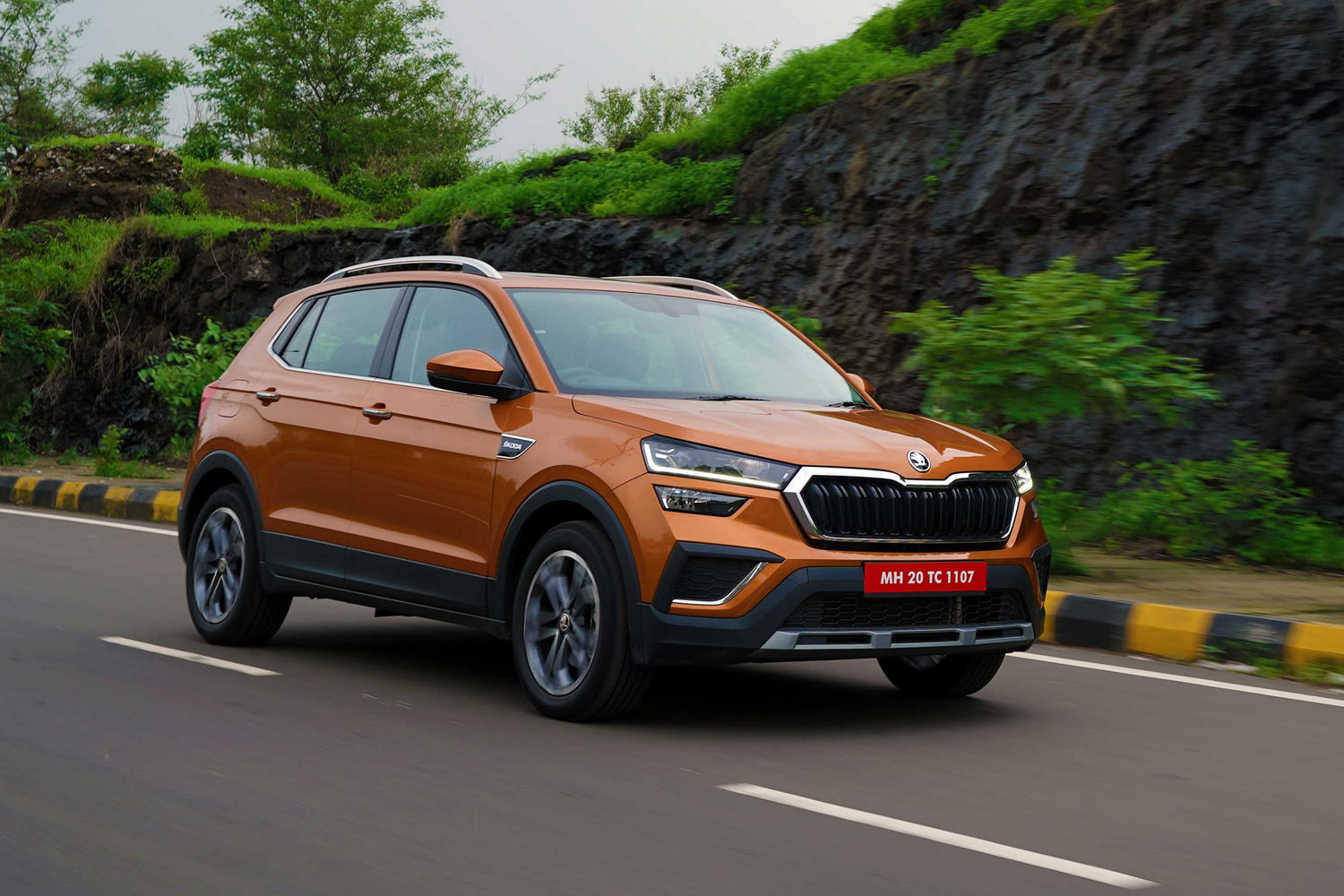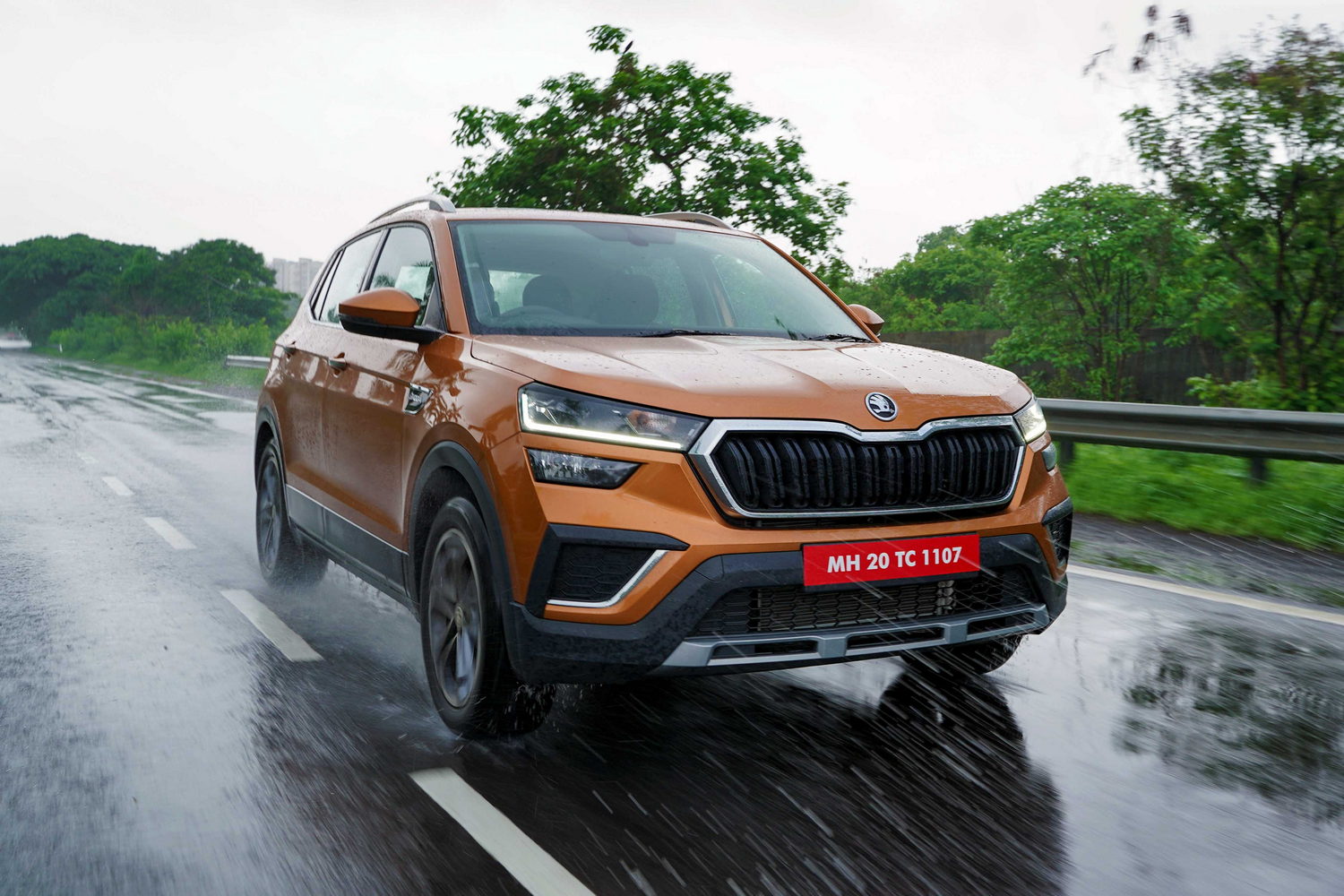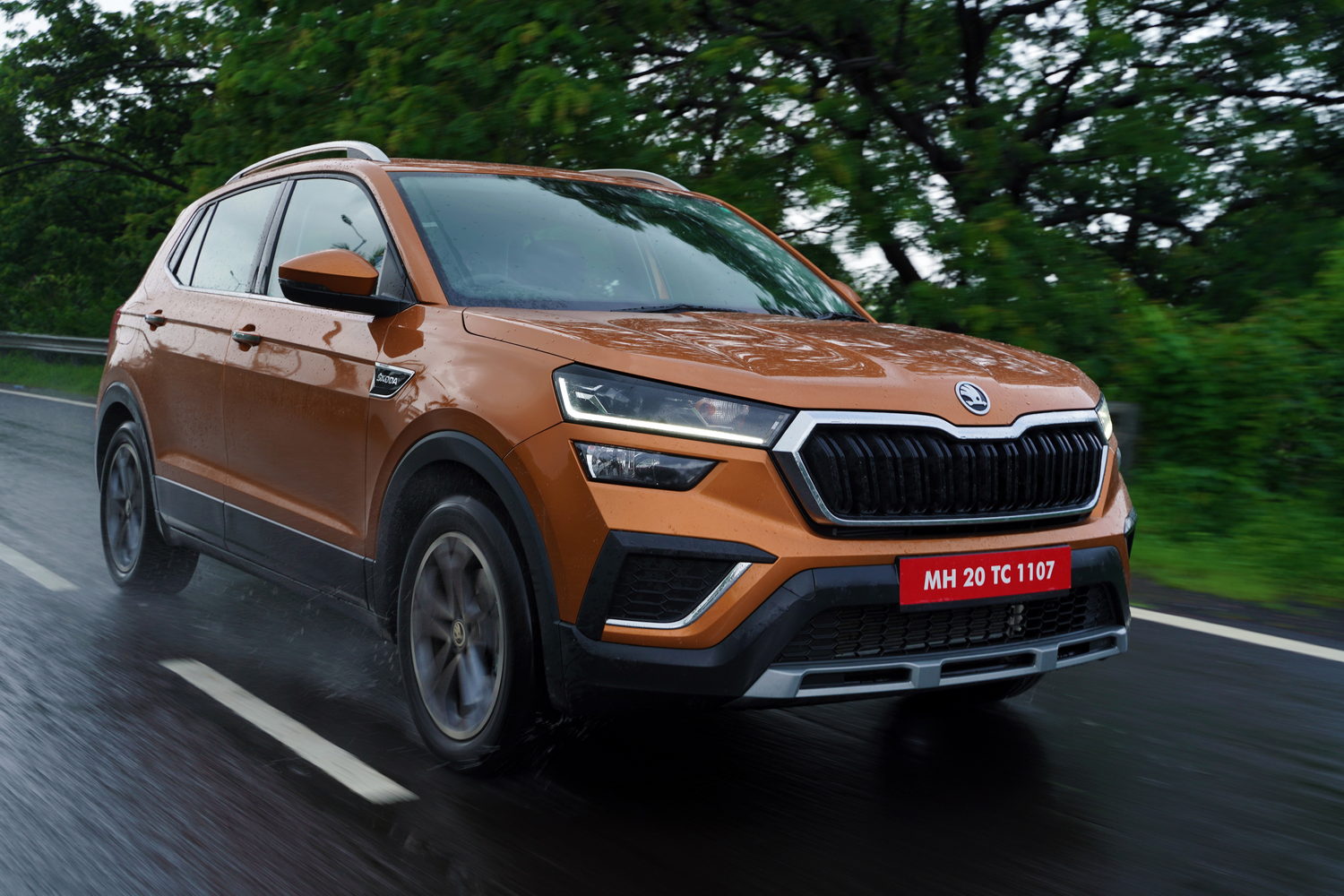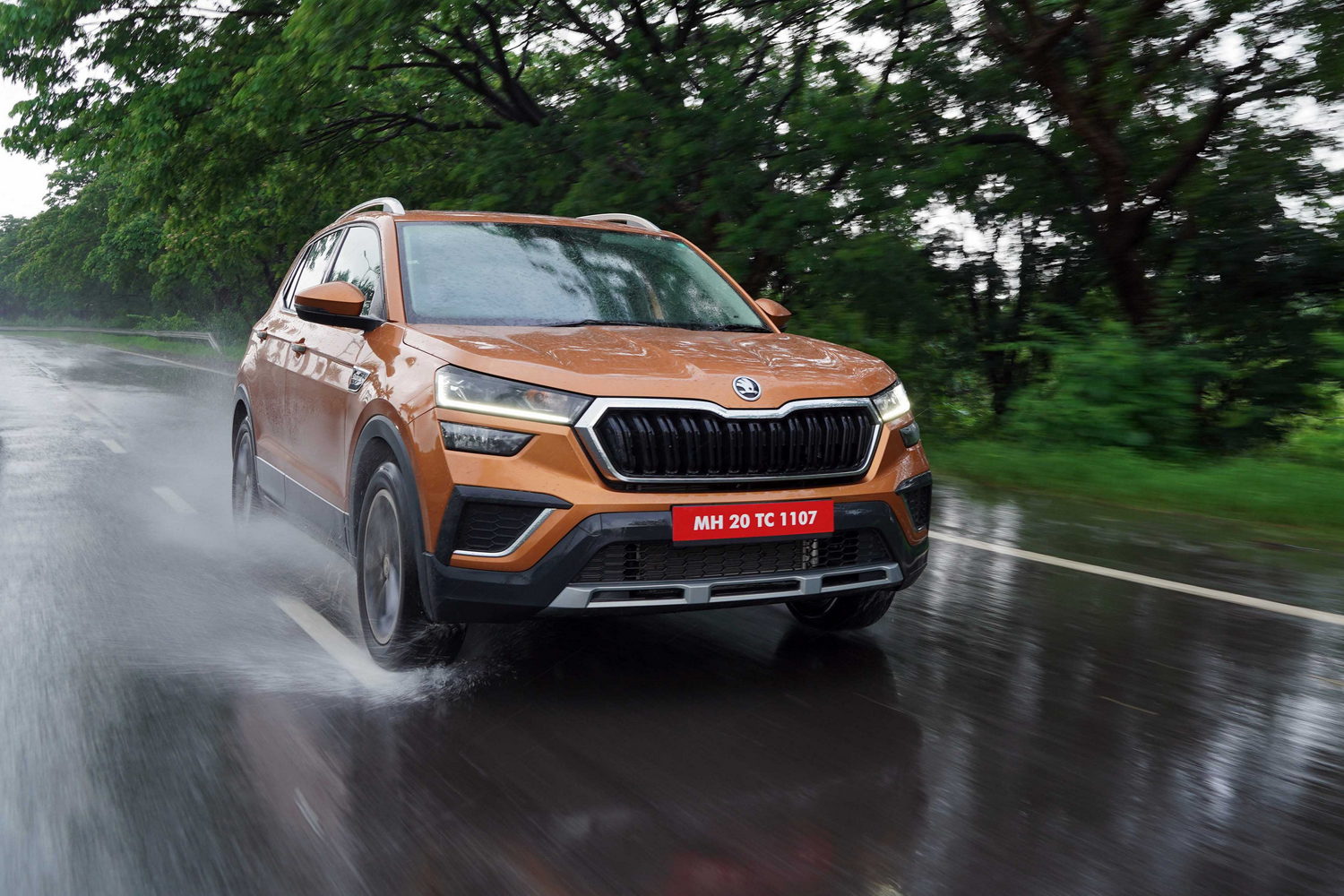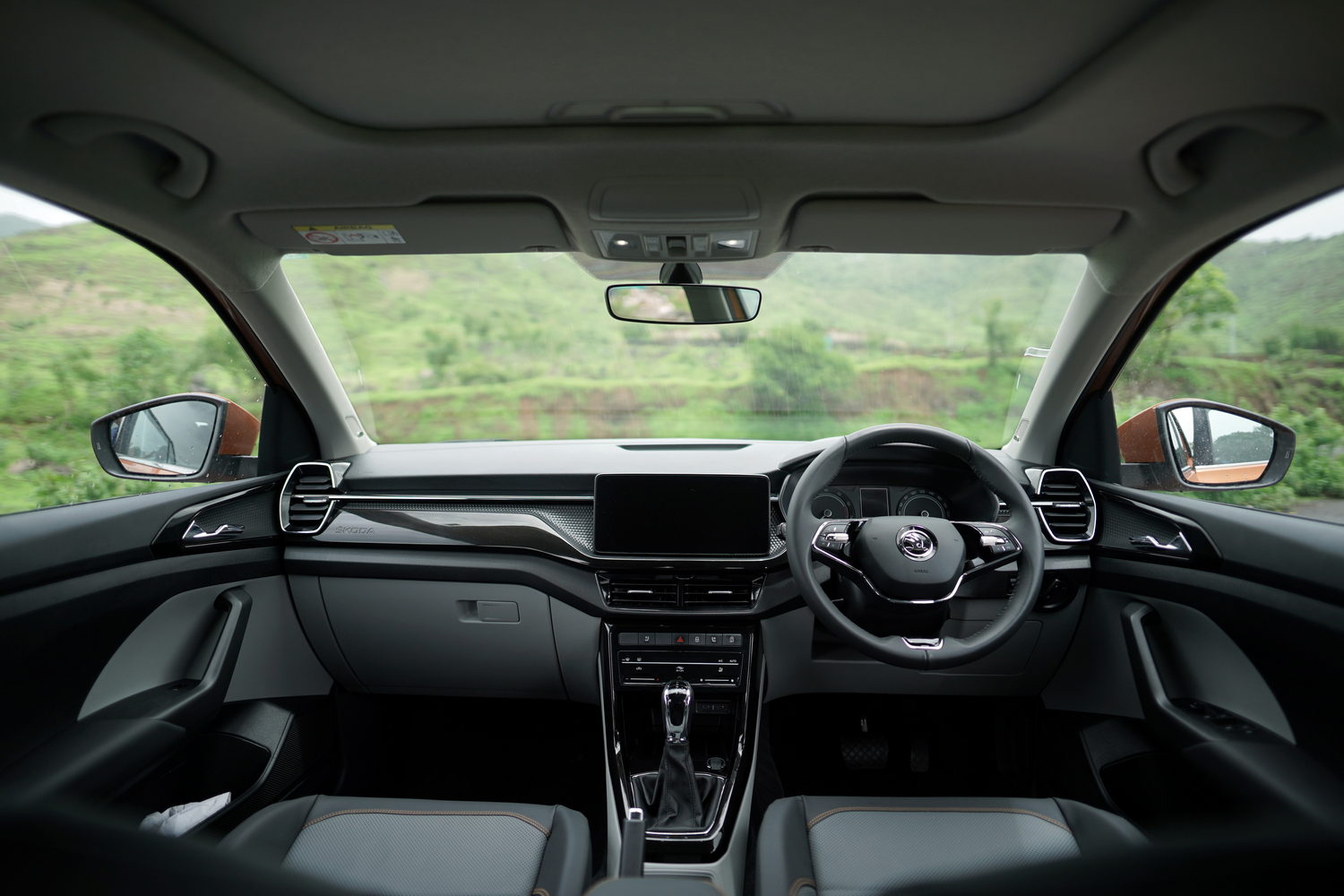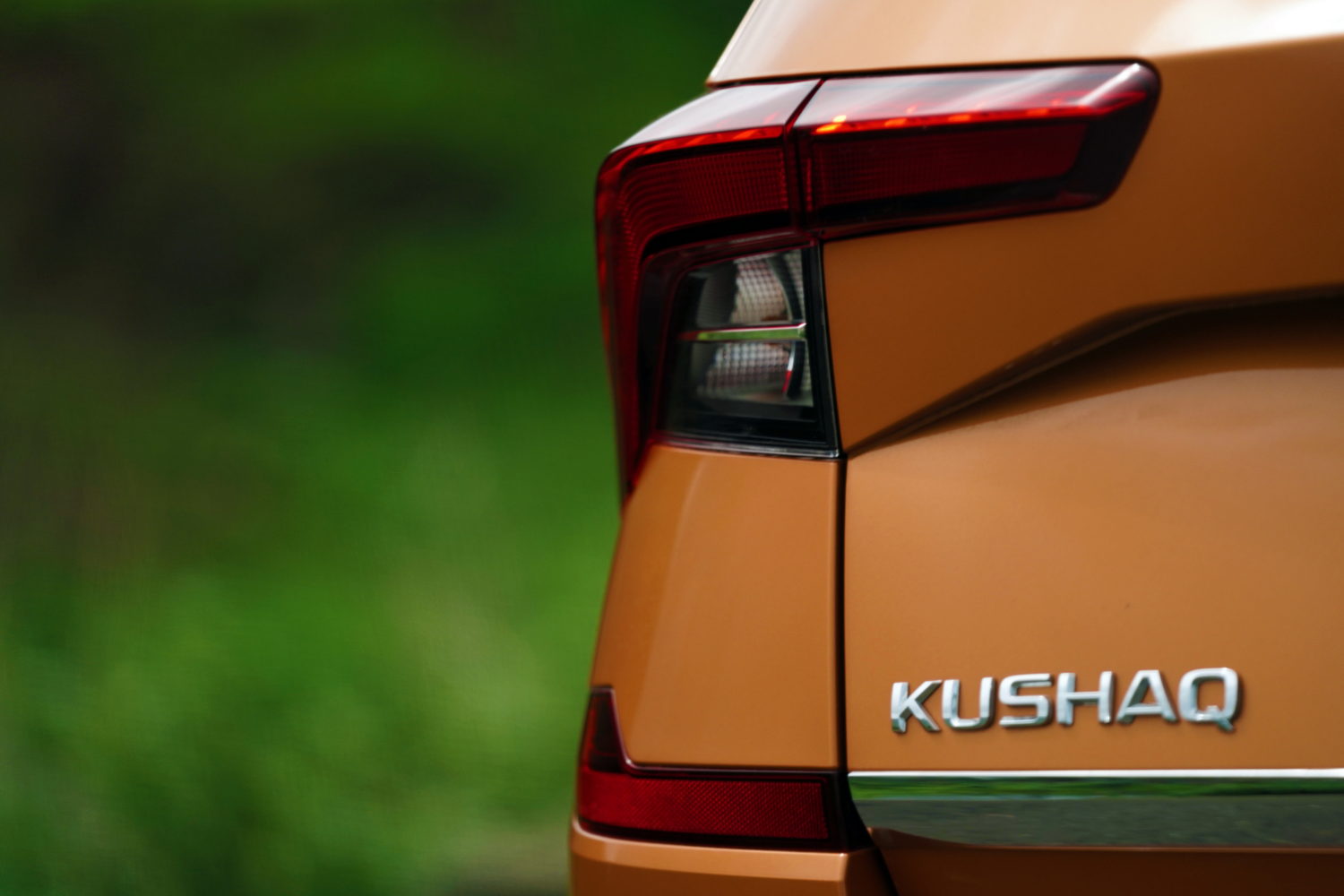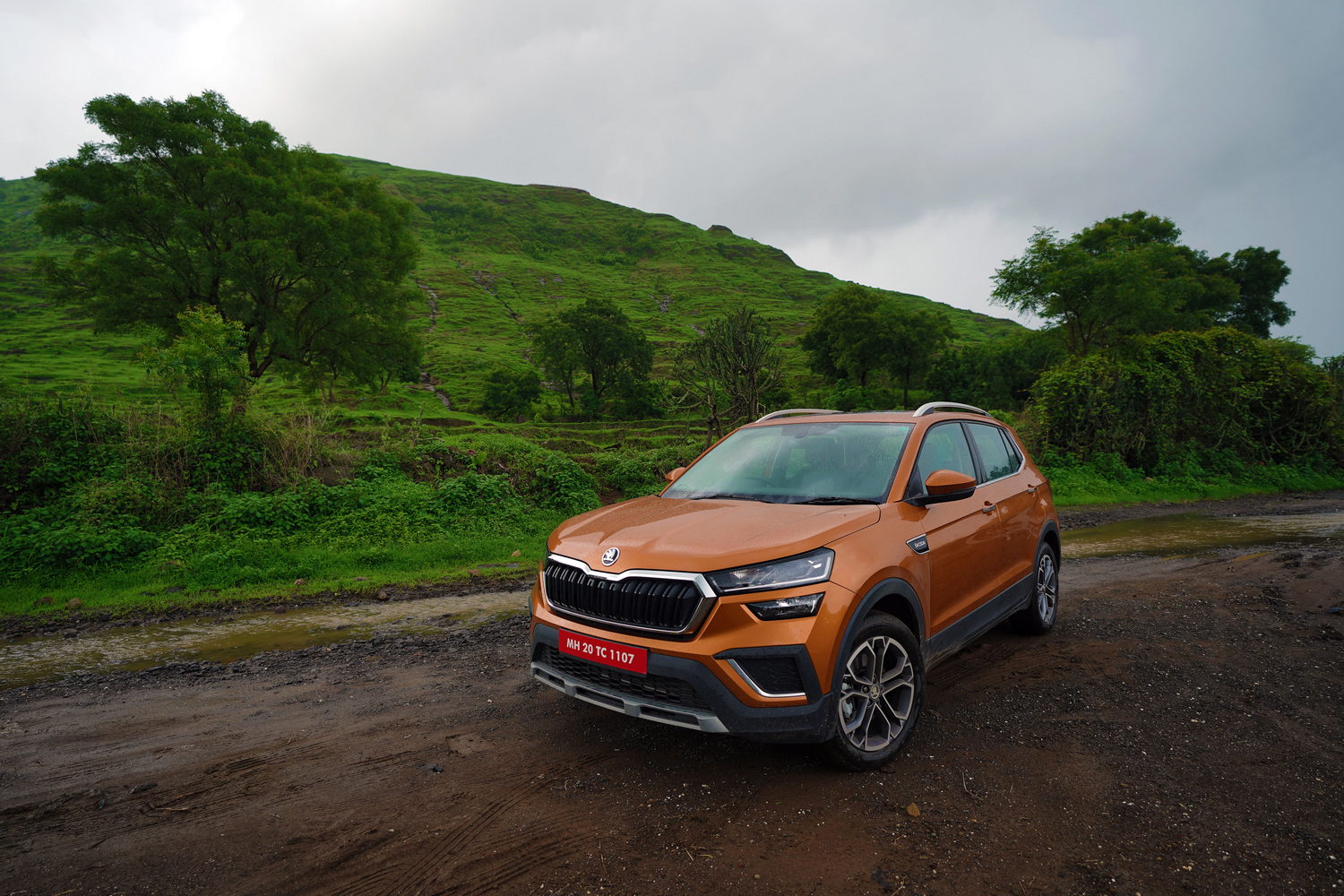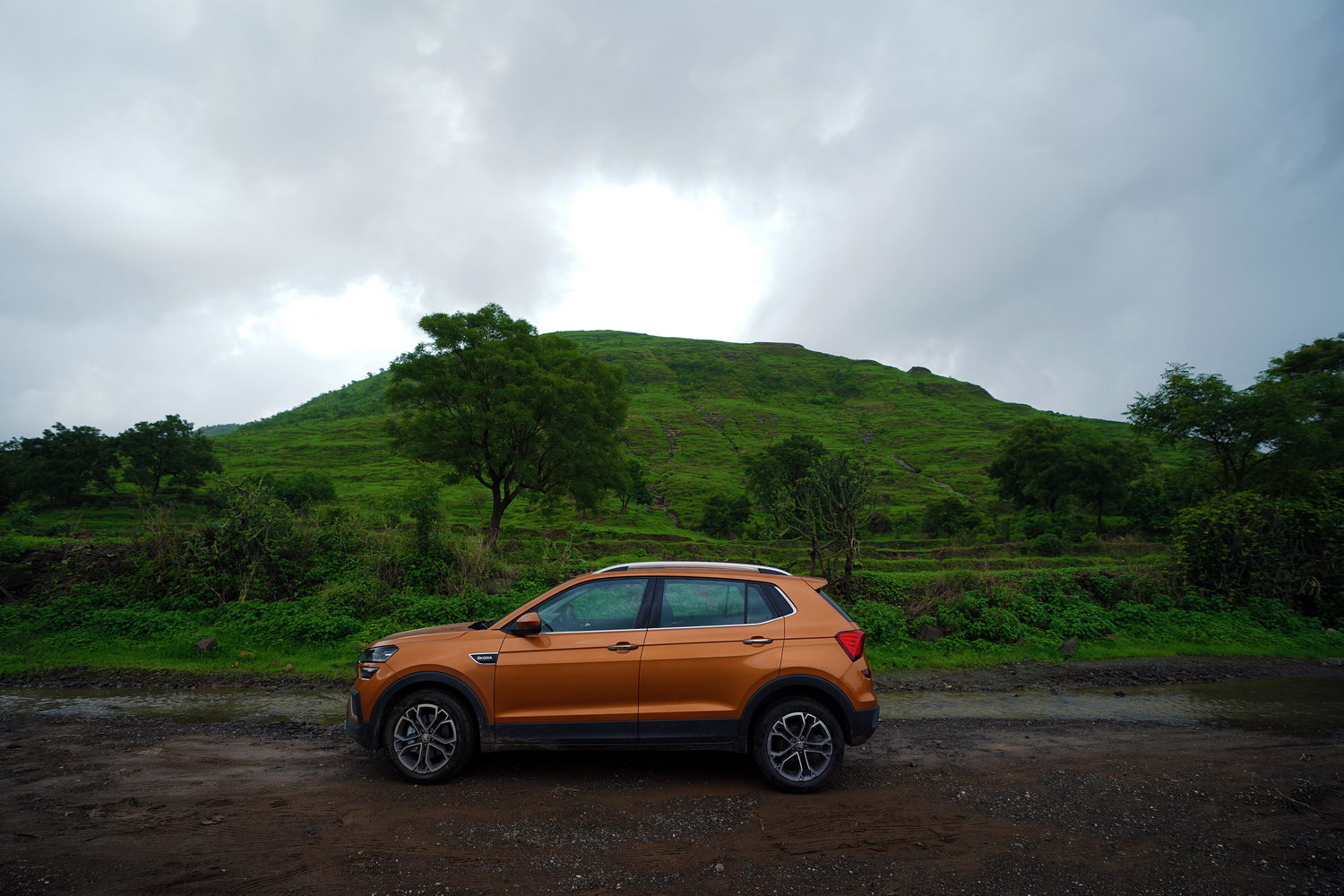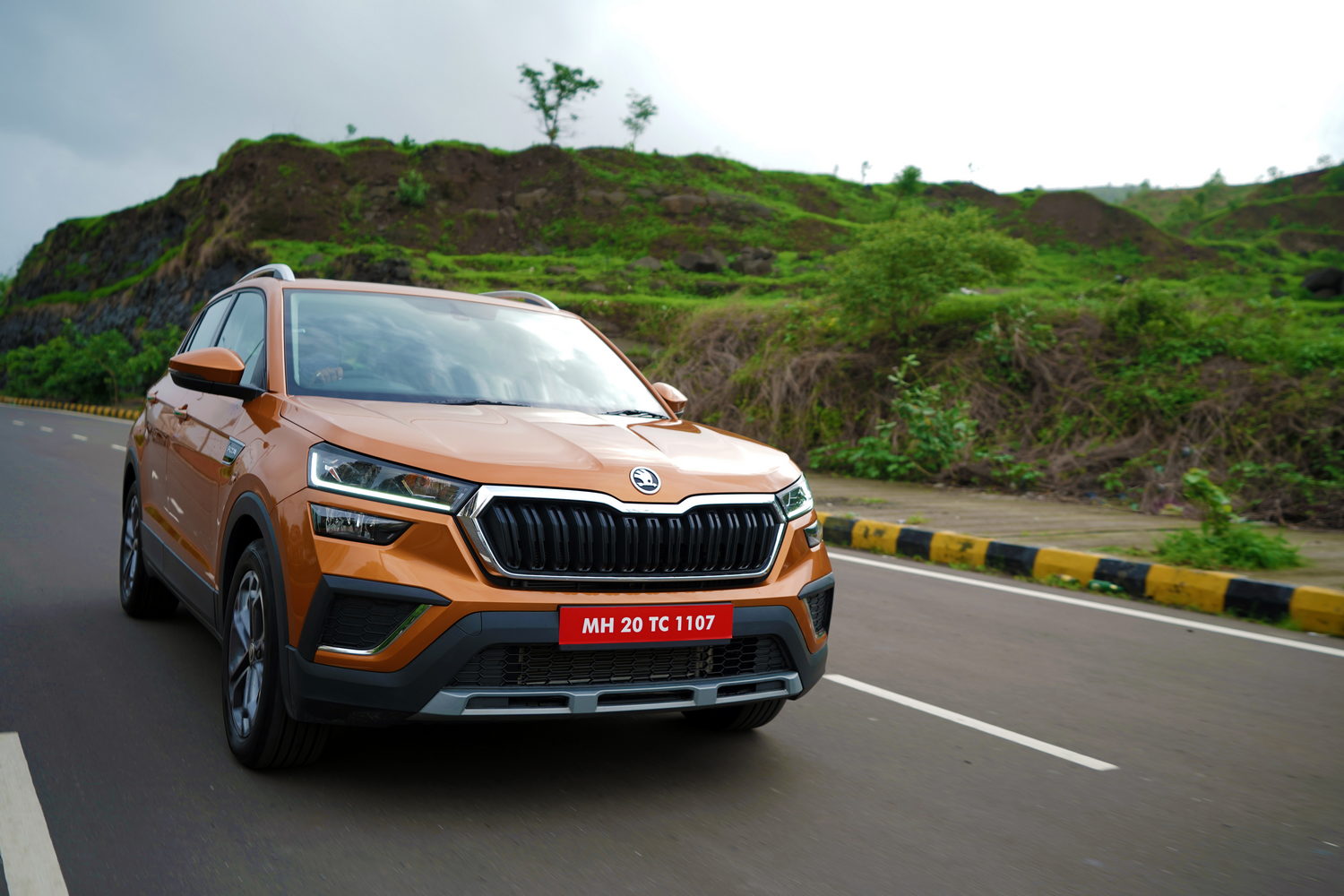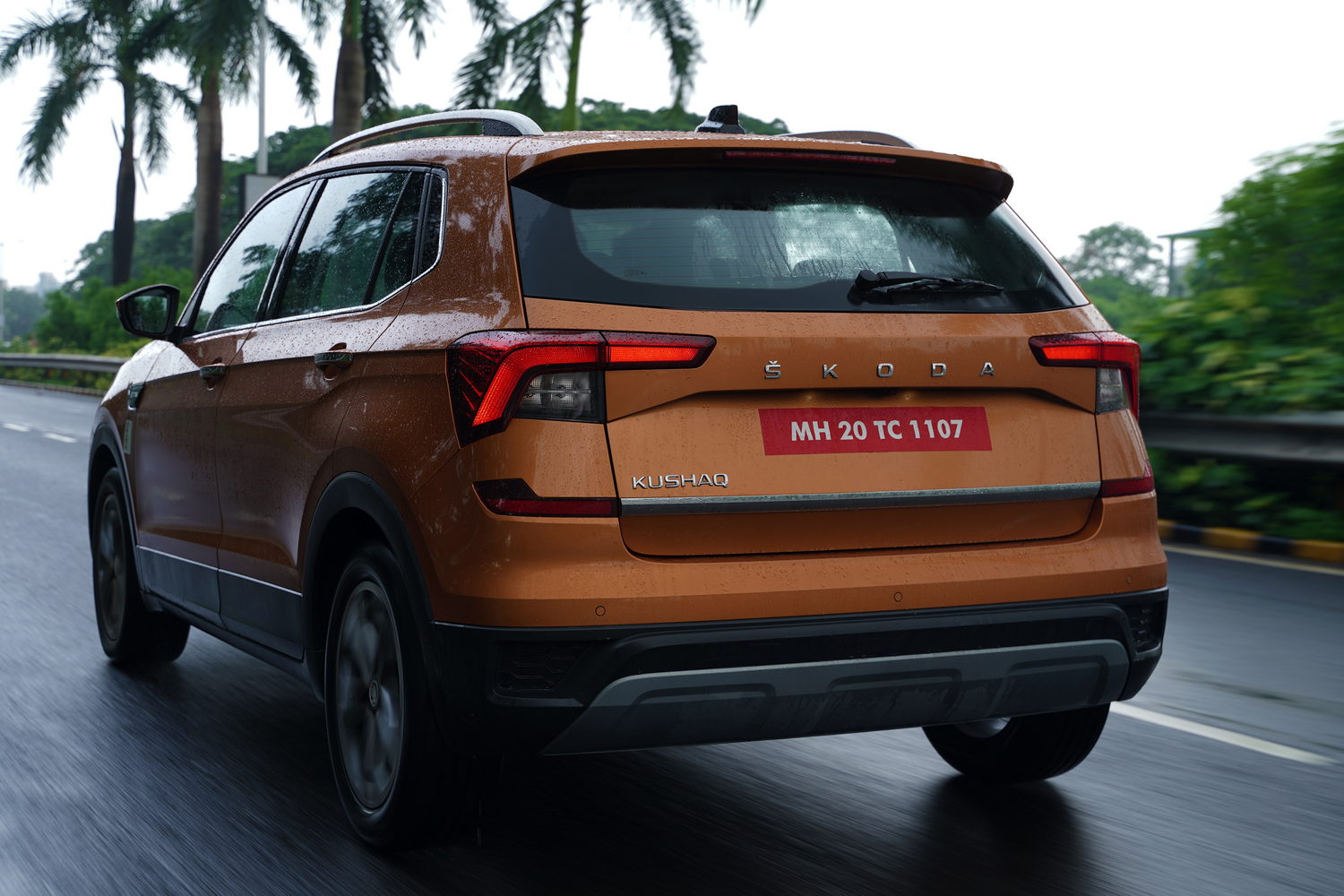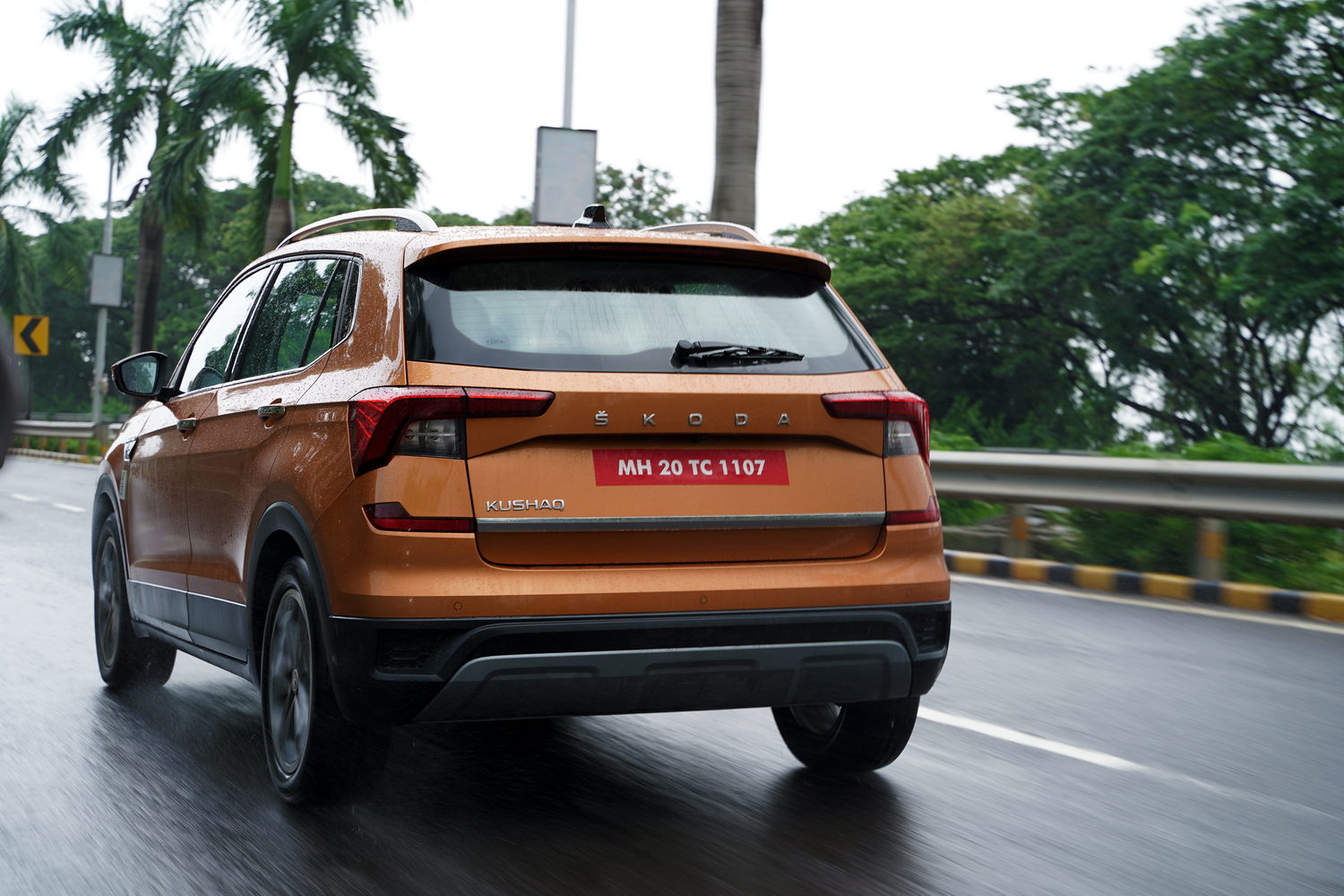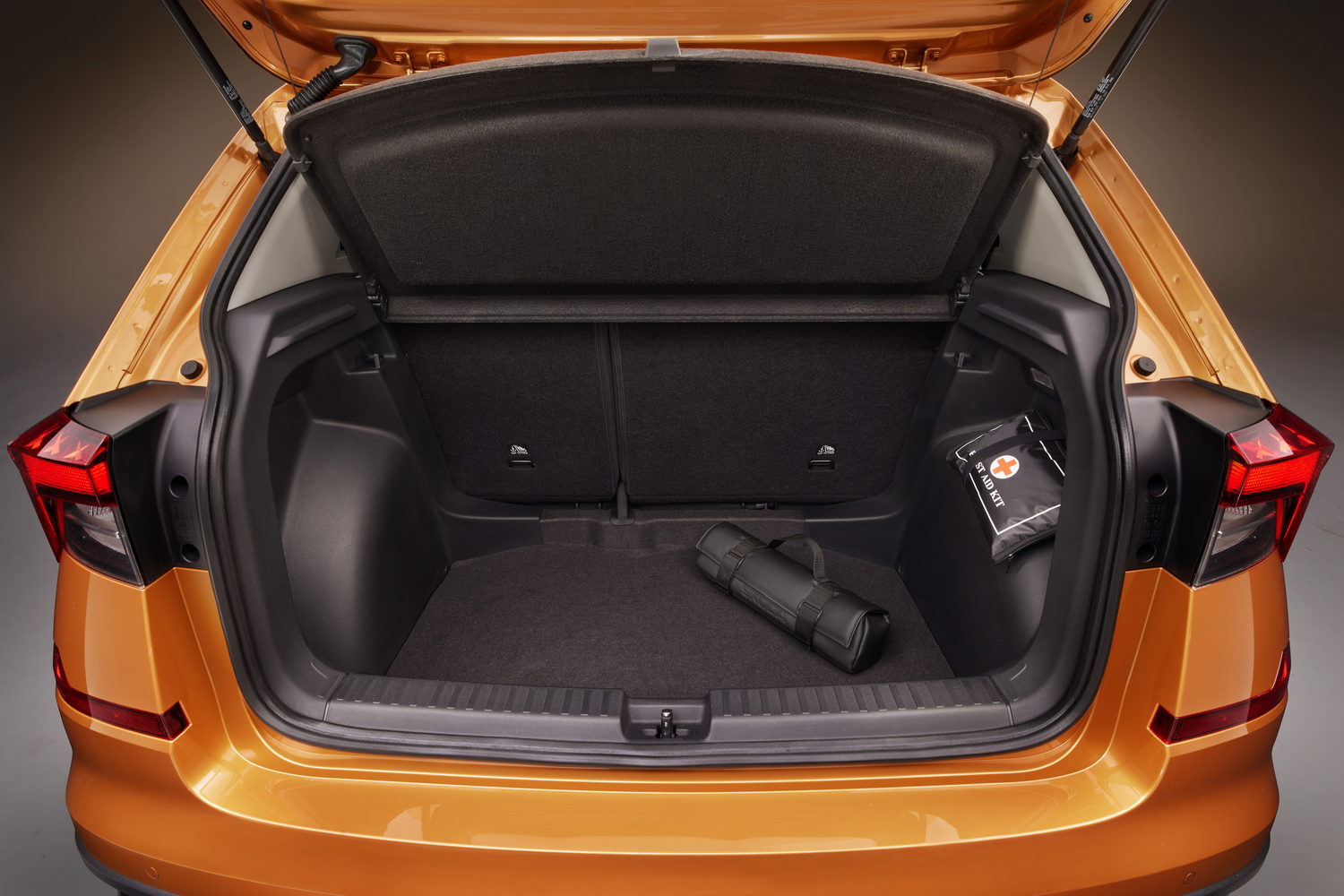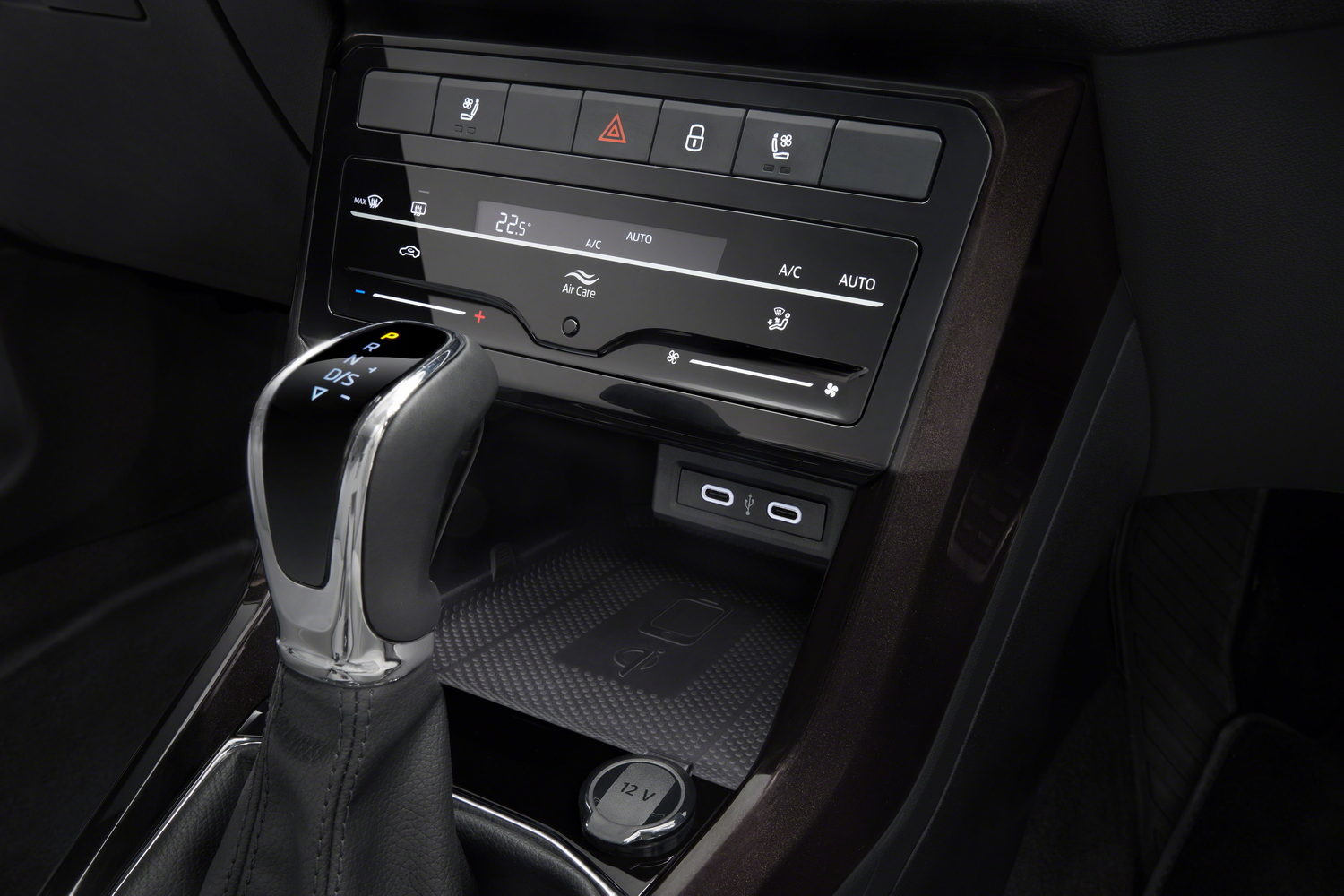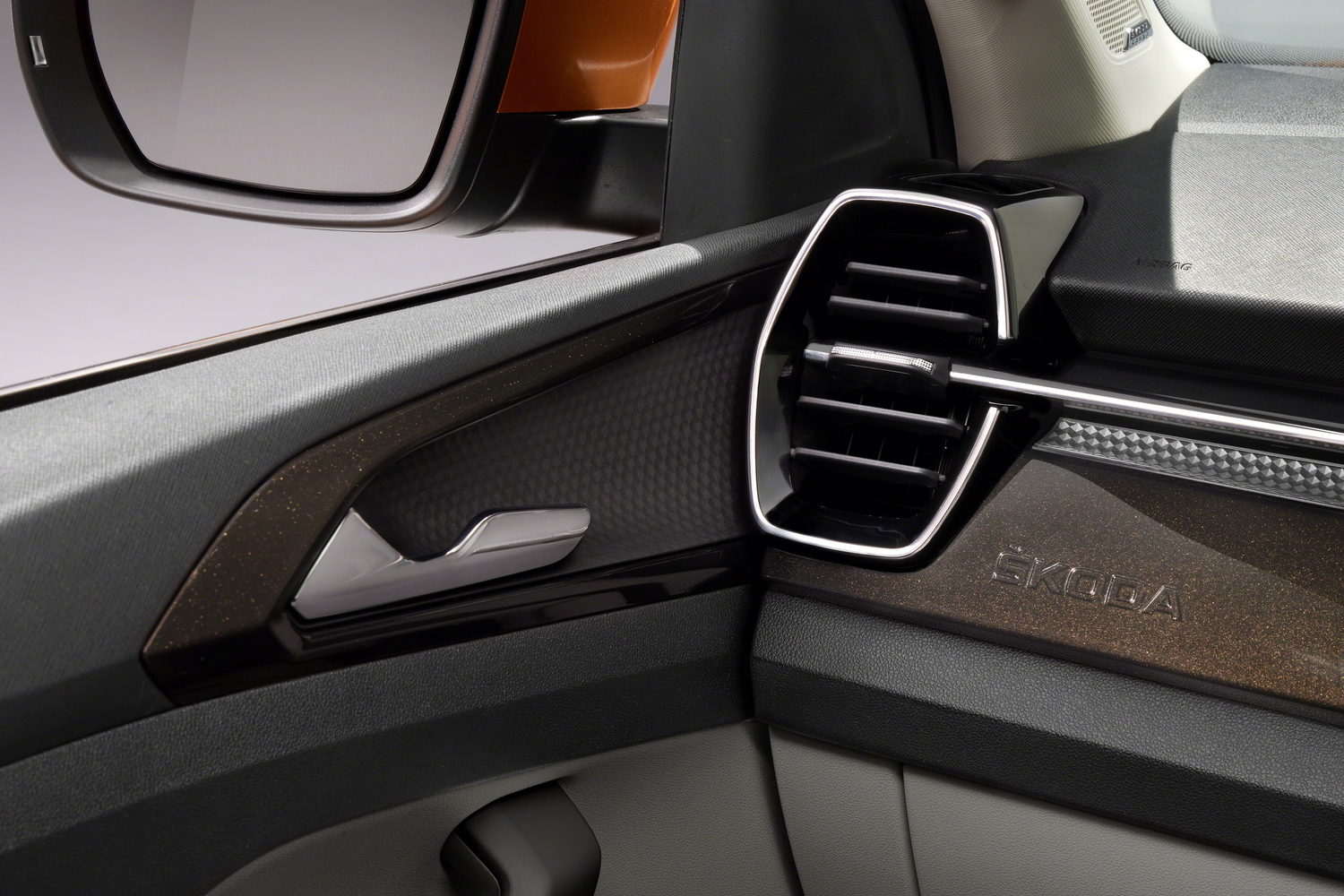The car market in India is one of the fastest-growing in the world, and Skoda hopes to steal a march on its rivals with the Kushaq. This mid-size SUV has been specifically designed for the local market and is a vital part of the Czech brand's 'India 2.0' strategy - and it has plans to expand into other markets in Asia.
In the metal
Design-wise, the Skoda Kushaq has strong family ties to European models such as the Kamiq. However, it is built a dedicated version of the Volkswagen Group's modular platform, called the 'MQB-A0-IN', the latter two letters referring to India.
The Kushaq uses the same styling cues as Skoda's crossovers and SUVs in Europe, with slight differences that appeal more to the local market. That means chrome exterior detailing around the broad front grille and within the lower bumper sections. Skoda also produces a sportier-looking Monte Carlo version that gets contrasting black instead of chrome, including on the window surrounds.
One aspect that is different from the compact crossovers we have in Europe is the ground clearance, which on the Kushaq measures 188mm. Such high ground clearance is needed because of a combination of poorer road surfaces and cities with sizeable speed bumps as part of traffic calming measures. The rear design is similar to that of Skoda models we see closer to home, with the brand's signature crystalline detailing in the rear light clusters, for example.
Opening the tailgate reveals a decent boot capacity and split-folding rear seats. The boot can swallow 385 litres, increasing to 1,405 litres when the back seats are tumbled forward. Furthermore, the cabin provides 26 litres of storage space dotted throughout, including commodious door bins. The Kushaq has a relatively long wheelbase for its size, which benefits rear passenger space.
That cabin is laid out conventionally, but there are some interesting differences from Skoda's European models. That starts with the materials used throughout the cabin, with harder-wearing plastics, partly because of the warmer climate the car operates in. Some of these surfaces don't have the same tactile feel as we're used to experiencing in Europe. On the other hand, there are standard features, such as ventilated front seats, which aren't typically seen in this segment in Europe. Another feature of the Kushaq is a small flat surface atop the dashboard, which is where owners can place their religious idol.
Specific features for the Kushaq Monte Carlo include red detailing on the seats and painted red surfaces across the tops of the doors, dashboard fascia and around the centre console. A 10-inch touchscreen is standard, and it runs a region-specific online app store where owners can download additional software for entertainment and navigation. Connectivity is a priority for Indian buyers, so wireless Android Auto and Apple CarPlay are also standard. There's a wireless phone charger and USB-C charge ports on hand, too.
The multifunction steering wheel is the same two-spoke affair that features in the Skoda Octavia and Enyaq, while a digital instrument display provides a clear readout of all the typical driving information. There's plenty of onboard safety, too, and the Kushaq is the first model to score a full five-star rating in the Global NCAP crash test for front- and rear-seat occupants. It's also the first car sold in India with six airbags as standard.
Driving it
Powering the Kushaq is a similar drivetrain to Skoda's European models. In this instance, the 1.5-litre turbocharged four-cylinder petrol engine is mated to a seven-speed dual-clutch automatic gearbox that works with the smooth familiarity of dozens of other Volkswagen Group products. Gear changes are quick, and the gearbox promptly reacts to inputs from the accelerator pedal. A manual six-speed gearbox is also available with this engine, and Skoda offers a 1.0-litre three-cylinder engine with six-speed manual and automatic transmissions, too.
Having the seven-speed automatic doing the shifting for you also makes the drive a bit more enjoyable. It will get up into the higher, longer ratios quickly. When cruising, the engine's 'Active Cylinder Technology' seamlessly switches to run on half of its cylinders to reduce fuel consumption. Even with the larger, and therefore slightly heavier, 1.5-litre petrol engine up front, the Kushaq's steering is very light. The front end reacts quickly to driver inputs, making it very easy to place and leaving it with a nimble feeling for a car of its size.
There is excellent visibility up front thanks to a combination of the raised driving position, large windscreen and slender A-pillars that minimise blind spots. There are several driver assistance systems in the Kushaq, but unlike European models, blind-spot detection isn't one of them. The rationale for this, as engineers explained to us, is that traffic in India can be so congested and, at times, chaotic that such a system would be activating far too frequently, so it was deemed better to exclude it.
The Kushaq does get Hill Hold Control to help ease away on inclines and a Brake Disc Wiping system that helps optimise braking performance in poor conditions. It isn't uncommon for areas of India to experience severe and sudden downpours, often with localised flooding, and this system adds some brake pressure to the calipers so that the pads are in contact with the discs when the windscreen wipers are activated, helping to clean off the disc surface, ensuring brake performance is at its optimum.
Despite the inconsistent nature of the road surfaces in India, there isn't much that unsettles the Kushaq. Even with larger alloy wheels fitted, the ride quality and comfort remain good, closely matching the experience in similar European models. The chassis has plenty of rigidity, and the suspension setup strikes a fair balance between decent body control and sufficient comfort.
What you get for your money
A direct conversion from Indian Rupees to Euro gives the Skoda Kushaq a starting price of just under €13,000, which is much less than the Kamiq costs in Ireland. Two engine options are available in India: a 115hp 1.0-litre TSI and the larger 150hp 1.5-litre TSI engine tested here. Both come with the choice of either manual or automatic gearboxes.
Summary
Driving the Indian-market Skoda Kushaq reveals that there isn't a great deal of difference between it and its European siblings when it comes to how it handles and performs. A more sensible approach to driver assistance systems and interior materials are among the little differences necessary for a car to succeed in India.

